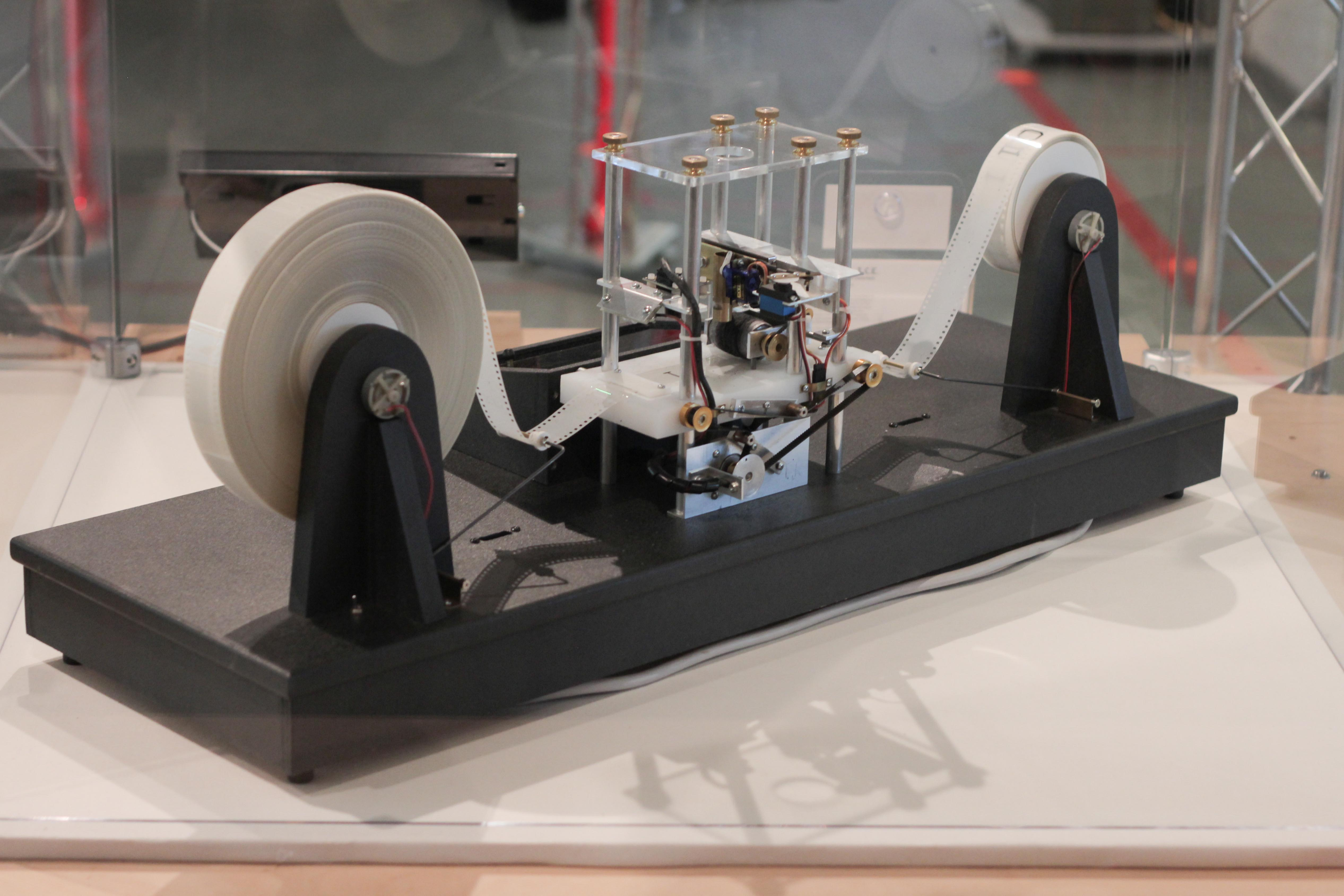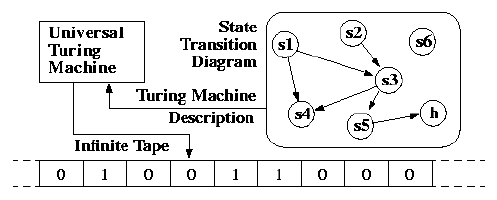Turing Machines are the next step in the evolution of automata. They are a theoretical model of computation that can simulate any algorithm.
Definitions
Before we get into the mathematical definition, let’s explore what a Turing Machine would look like in the physical world.

The simple idea of a turing machine is just a tape with a read/write head. The tape is infinite in both directions, and the read/write head can move left or right. The tape is divided into cells, each of which can hold a symbol from a finite set of symbols.

We can define a Turing Machine as a 7-tuple:
Where:
- Q is a finite set of states
- is a finite set of input symbols (input alphabet)
- is a finite set of tape symbols (tape alphabet)
- is the transition function
- is the initial state
- is the accept state
- q_{reject} is the reject state
But we already know most of this from previous automata. The new part is the transition function, which is defined as:
There are also multiple Turing Machine Variants, but that is for another time.